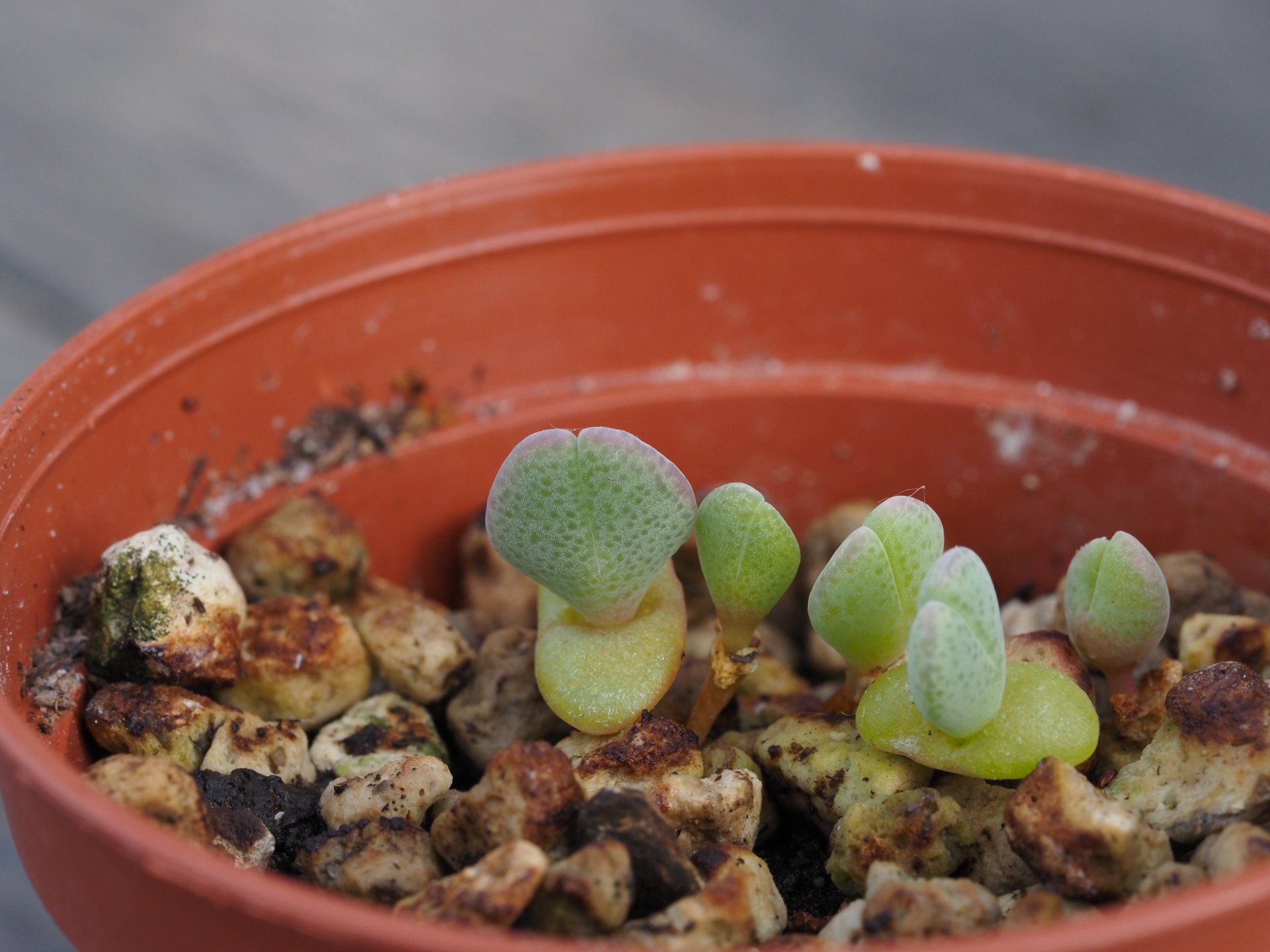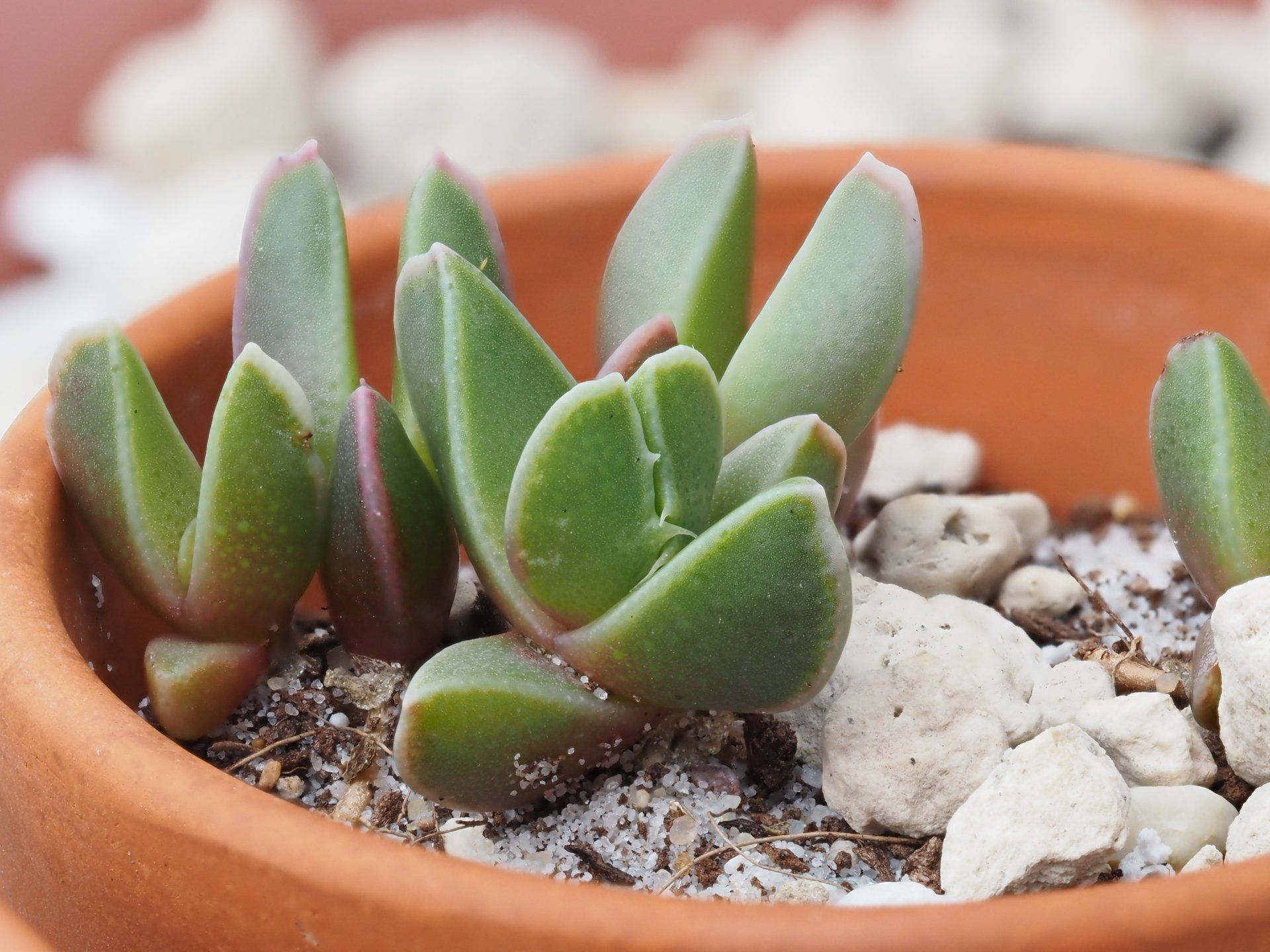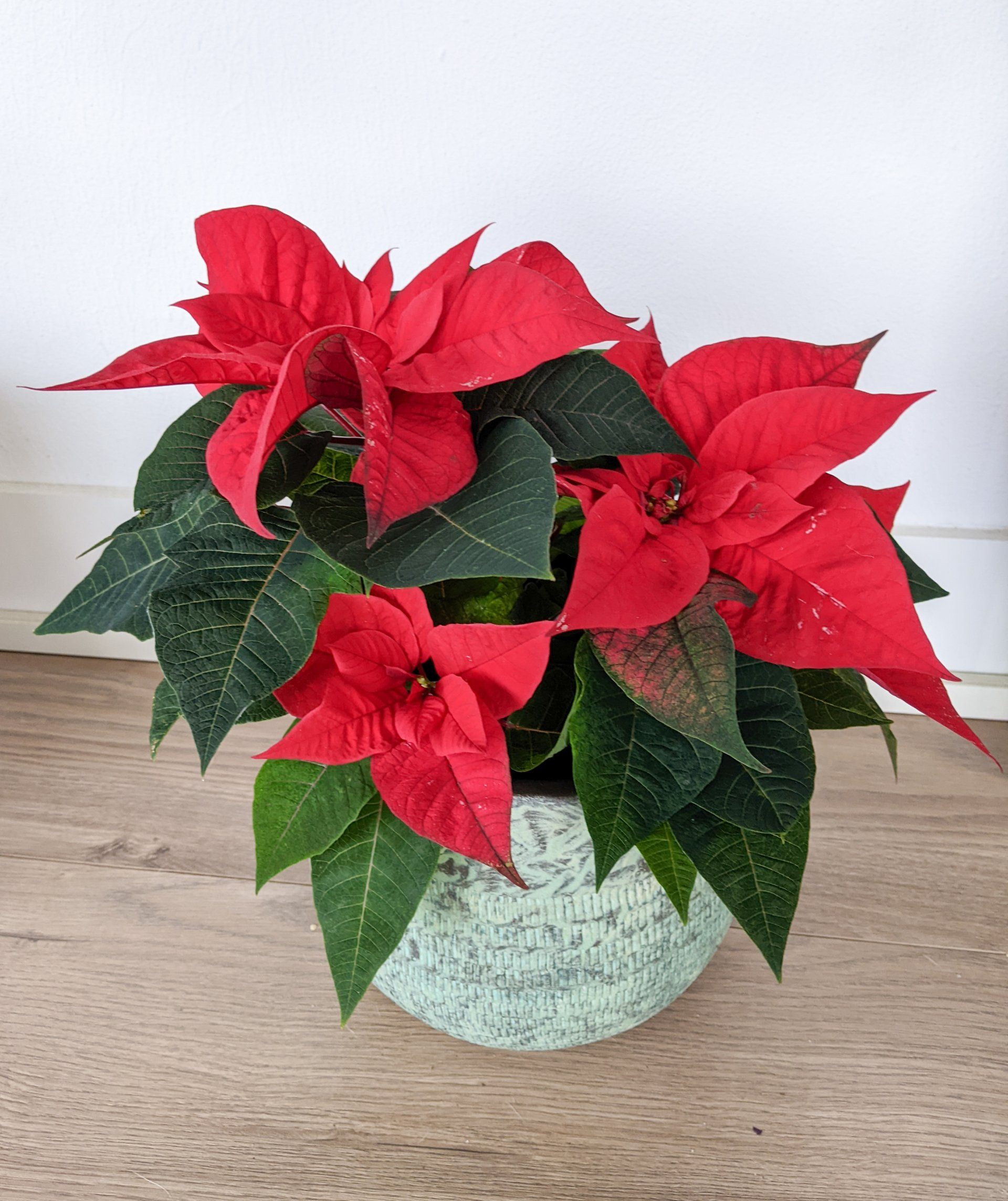555-555-5555
mijnmail@mailservice.com
Fatties
Fat plants, a.k.a. succulents

Right: Rogier van Vugt Left: me. Foto: Petra Sonius
The October issue of Gardeners' World magazine NL featured an article by Rogier van Vugt (greenhouse chef Hortus Botanicus Leiden) and myself about succulents. This is the translation:
M: A succulent with partly transparent leaves! I got it from Rogier after our first meeting, about two years ago. This little Haworthia cooperi was a 'pup', a little one that had started growing on the mother plant. This mother plant was collected by an acquaintance of Rogier in the Bolo Nature Reserve in South Africa. My love for wonderful weird plants immediately bubbled up. And there is much more to discover about succulents!
R: This was our first meeting, Marieke. And these glass haworthia are still one of my favorite plants. I myself started it because I am a very lazy waterer, but I still wanted something special on the windowsill. Succulents are perfect for that. They are so incredibly diverse. Succulent is a collective name for a wide range of plants that are not necessarily related to each other. They are plants that store water above ground, in their leaves or stems, and can survive in areas where it is regularly very dry. For example, many cacti are succulents. But not every succulent is a cactus, because cacti are a certain plant family and therefore related to each other. For example, there are cacti that are not succulents but still a cactus, simply because they belong to the cactus family.

Titel dia
Schrijf uw onderschrift hierKnop
Titel dia
Schrijf uw onderschrift hierKnop
Titel dia
Schrijf uw onderschrift hierKnop
Titel dia
Schrijf uw onderschrift hierKnop
Haworthia cooperi, the wild variety. The leaves are transparent on top. On the side, little 'pups' are growing.
M: Succulents are often considered easy houseplants indeed: they need little water, little to no nutrition and you don't have to repot them quickly. If that suits you, it is indeed the ideal houseplant. At least: if you have a bright spot for them. Sometimes I see people proudly displaying their 'fast-growing succulent' on social media. Instead of a healthy, thick plant, you see a thin stem desperate for light. We call that etiolating or stretching. It often happens in winter, when there is less light but people continue to water the succulents in the warm living room. It is better to reduce watering during these months and, if possible, to move your succulents to a colder place, for example in the bedroom.
R: Yes, oops! Succulents are real survivors, but with a few well-intentioned green fingers they can just die. Too little light is often the reason. The good thing about being able to survive in a place where the competition can't is that there aren't many plants to provide shade. So a lot of light is essential. Also, a constantly moist soil is something that these plants can't handle. The roots can then easily rot and then your plant seems to dry out while it is soaking wet. But the scorching sun in the summer and almost no water is not good either. Especially behind glass you can get a situation that becomes too much even for a desert plant. It is difficult to lump all succulents together because you can even find succulents in arctic regions. But you can assume that what is for sale at a garden center can actually be grown in a house. It is much more fun to buy these plants from a specialized grower though. You'll get a decent name tag and you can look up the origin and exact wishes of the plant.

Titel dia
Schrijf uw onderschrift hierKnop
Titel dia
Schrijf uw onderschrift hierKnop
Leaves of Echeveria growing roots and new plants.
M: Succulents are very easy to propagate via leaf cuttings. You break off a leaf and place it on a dish in a light place. Then you have to do what is sometimes difficult for fanatic plant lovers: ignore. After a while, the first roots emerge from the leaf. Wait a little longer and the new plant will start to grow! In the photos above you see new plants emerging from the leaves of an echeveria.
Yet sowing succulents is also a great activity. With a grow light you can even do it all year round. When your work in the garden comes to a standstill, you can get started with your succulents indoors. A high temperature is not necessary. Many succulents come from areas with hot, dry summers, but that's obviously not the time for them to germinate. They only germinate in the colder, wetter period. Twenty degrees and a light, damp spot is all you have to offer them. It is beautiful to see how the small green dots very slowly take their adult form. Patience is a requirement here; most succulents take years to mature.
R: However, there are also succulents that only live for one or a few years. So you have to sow it again and again. Sounds like a hassle but is actually fun because you see the development of these plants quite quickly. A very special example is Aichryson dumosum. Online you can buy seeds of this succulent plant for a lot of money, which only occurs on a tiny part of Madeira. I once started with a few seeds and now I have a lot of them that I can distribute to people. In this way, endangered plants can get a helping hand and they can't just get extinct should things ever go wrong in nature.

Titel dia
Schrijf uw onderschrift hierKnop
Titel dia
Schrijf uw onderschrift hierKnop
Titel dia
Schrijf uw onderschrift hierKnop
Growing succulents from seed is fantastic! You do need patience, but you will see the adult form quite fast. On these photos you see Dintherantus seedlings (with the dots) and Faucaria tigrina (with 'teeth') and on the background Cheiridopsis.
M: Rogier gave some of them to me as well. Of course I cherish those seedlings: it's great that I can contribute to the preservation of this species in my living room! Hopefully they will flower enthusiastically so that I can pollinate them and also give away the seeds.
In the meantime the Haworthia cooperii puppy that I got from Rogier has grown considerably. She is busy making puppies herself. Soon I will be able to make someone happy with a fascinating succulent and hopefully spark the love for this group of plants!
Buying seeds or plants from a specialist? Some tips:
-Unusual Seeds (Serbia): also on Etsy. Offers many different types of seeds with high germination rate. The owner responds quickly to your questions through Etsy and is very helpful. On his website you will find very detailed information about sowing all kinds of succulents. You will not only find information about sowing but also what to do when the seeds have germinated. When are you going to lower the humidity? When are you going to put the plant in full sun? That kind of information is often missing from other companies.
- Ikhebeencactus: In addition to cacti, they also offer special succulents and caudex plants.
- Sunnyplants: Plants, cuttings and seeds of mainly cacti and succulents. Look at Unusual seeds above for extensive sowing and growing tips.
- Uhlig Kakteen (Germany): Besides seeds and plants of cacti and succulents, they also sell many special hoyas (wax flowers). You can visit the nursery in Germany, or order online.
- Mesa garden (US): large assortment of cacti and succulent seeds. Rogier indicates that he has never had customs problems with seeds from the US.
- Kakteen Haage (Germany): Both plants and seeds of cacti and succulents. You can visit the nursery in Germany, or order online.
Beware of obscure online offers on auction sites that promise plants in unreal colors.
Questions or remarks? Don't hesitate to contact me!











